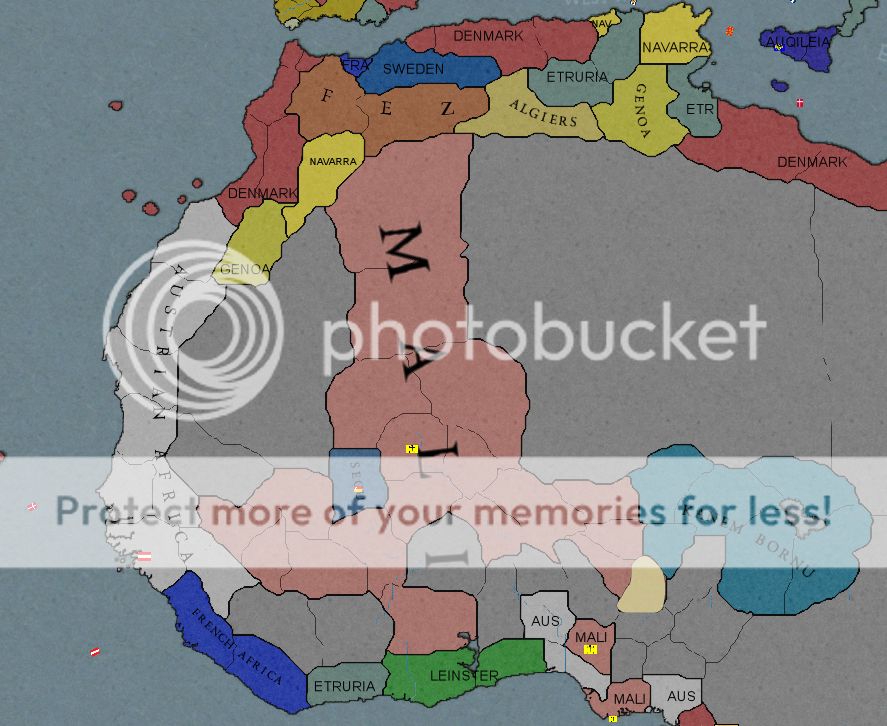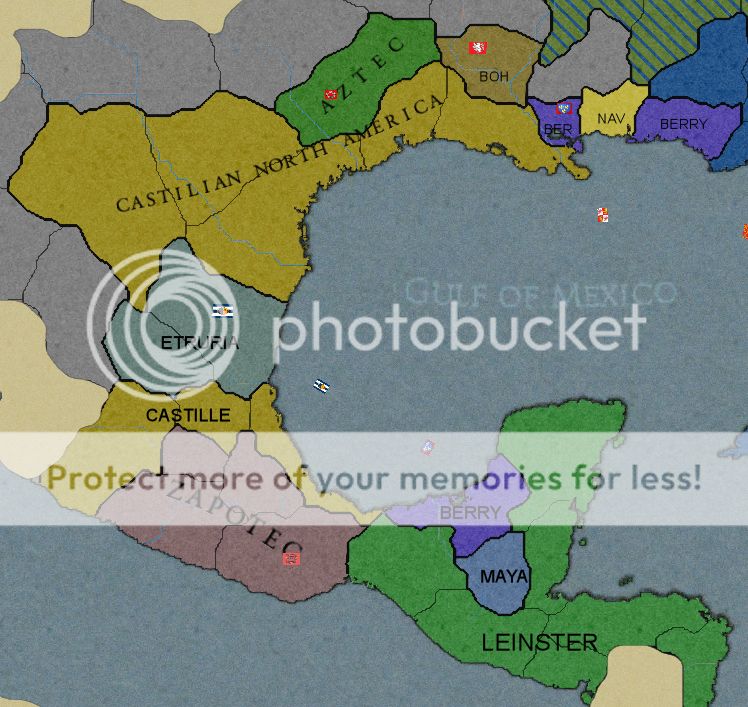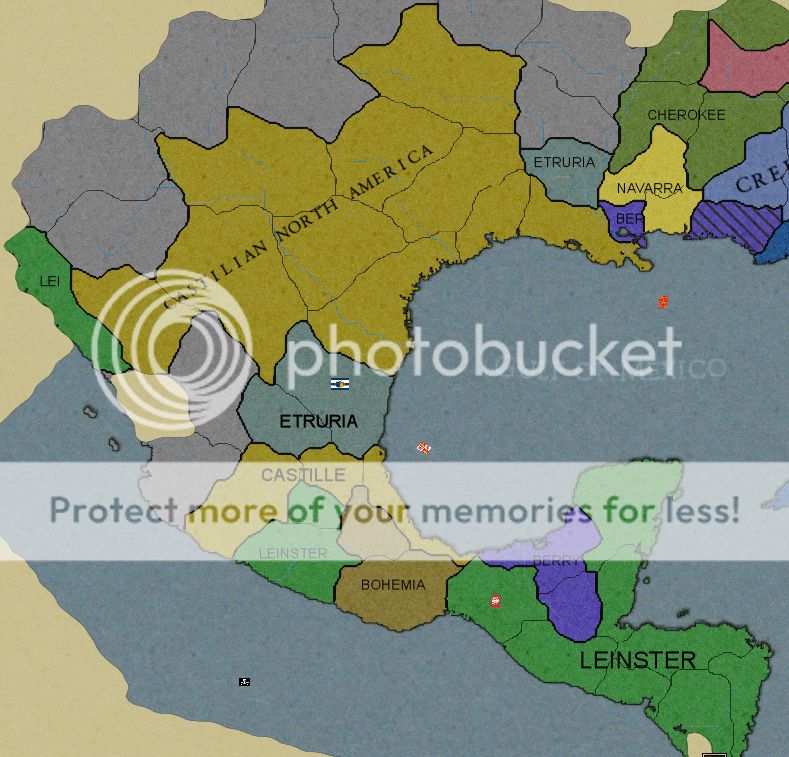A few comments on Leinster. I’m afraid it won’t be Doge of Ireland, if it happens, because Leinster has become a Republican Dictatorship now. They didn’t actually regain the southern province by defeating England, though. It rejoined them in a revolt.
Connacht became independent after a second war between England and Leinster that I neglected to mention. It might not be that easy to take Connacht to form Ireland however because they are very rich. As of 1696, they have 34 active merchants and a treasury of over 10,000 ducats. They are also allied with Berry, Normandy and Foix, so it would put Leinster’s possessions in Brittany at risk.
With regard to the HRE, I think I put an HRE map in the 1648 update? Or was it the one before that. Basically, all the small states in central and eastern Europe except Danzig, Prussia, Augsburg and Moldavia are members, along with Bohemia, Sibir and Austria. Frankfurt is not a member of the HRE and Bohemia wasn’t either at the beginning of the game. Neither is Aquileia, the sleepy country that I don’t think has been involved in an EU3 war—they’ve bought into the tradition of Swiss neutrality, I guess.
The “Polish corridor” between the eastern and western HRE has been a bit of a quandary for the Empire. Sibir is capable of protecting the eastern HRE states, which have been pretty stable, which is why I haven’t talked much about that. However, they’ve been hopeless at stopping Frankfurt and Hungary in Central Europe. The electors did try Bohemia as emperor back in the 16th century, but it wasn’t strong enough. Austria probably would be more capable, but has gone protestant.
@yegur, umm…German grammar and usage has evolved a little differently in this timeline?
@I8strudel, the blue spot at Julich belongs to Aquileia, not France. Still, France is trying to build a colonial empire and consolidate its holdings in northern France. If Frankfurt can break down the HRE wall between itself and its French allies, I think France's geopolitical position will get much stronger.





